Revised in 2023 with a current list of bars, prices, and updated finish options.
A typical powerlifting bar has features geared towards the big 3 lifts: squat, deadlift, and bench press. Most prominent among the bar features is aggressive knurling. The bars featured here stick to your hands like no regular bar will.
Anyone doing strength training focused on slow, controlled exercises would benefit from one of these bars instead of one tailored towards the fast, explosive clean-and-jerk and snatch exercises of olympic weightlifting.
Table of Contents
Quick Feature Comparison Chart
Scroll right to see all 8 brands.
| Rogue Ohio Power Bar | Texas Power Bar | ISF Power Bar | BoS Powerlifting Bar 2.0 | eliteFTS Power Bar * | Rep Power Bar EX | American Barbell Elite Power Bar | Vulcan Elite Powerlifting Bar | |
|---|---|---|---|---|---|---|---|---|
| Knurl | Volcano | Mountain | Mountain | Mountain | Mountain | Mountain | Fine Mountain | Volcano |
| Ring Marks | IPF | IPF | IPF | IPF | IPF | IPF | IPF | IPF |
| PSI | 205,000 | 190,000 | 205,000 | 210,000 | 190,000 | 200,000 | 190,000 | 196,000 |
| Thickness | 29mm | 28.5mm | 29mm | 29mm | 28.5mm | 29mm | 29mm | 29mm |
| Shaft Finish | Bare Steel or Black Zinc or Stainless Steel | Bare Steel, Black Zinc or Chrome | Bare Steel or Black Oxide or Ceramic | Bare Steel | Bright Zinc | Stainless Steel | Stainless Steel | Black Zinc |
| Sleeve Finish | Bare Steel or Bright Zinc | Bare Steel or Chrome | Chrome or Black Oxide | Chrome | Bright Zinc | Stainless Steel | Chrome | Bright Zinc |
| Sleeve Texture | Grooved | Smooth | Grooved | Grooved | Grooved | Smooth | Smooth | Smooth |
| Bushings | Bronze | Bronze | Bronze | Bronze | Bronze | Bronze | Bronze | Bronze |
| Made in | USA | USA | China | China | USA | China | USA | USA |
| Price | $305-$485 | $295 – $320 | $256-$298 | $220 | $329 | $450 | $595 | $390 |
The Specs Explained
Finish
The finish applied to a bar makes a difference in the durability of a bar and how tacky/grippy it feels.
Chrome – Chrome plating looks nice and wears well from repeated banging on a rack. And it can take a while for chrome to start rusting. But there are downsides. The smoothness of chrome makes it kind of slippery when your hands get sweaty, even over good knurling. Chrome can sort of get a bad rep because most of the economy 300lb weight sets include a cheap chrome bar, and on really cheap bars the chrome plating can start chipping off, but that won’t happen with the good chrome plated bars listed here.
Black Oxide – This is a thin coating that feels almost like bare steel. It’s thin enough that it doesn’t fill in any of the depth of the knurling like chrome or zinc plating does. It also gives a better grip than chrome. And it helps prevent rust (anti-corrosion), but the anti-corrosion properties of black oxide are activated by oil, so you have to oil it once in a while. It scratches more easily than other finishes, so a bar used in a rack will immediately show signs of use from the metal-on-metal contact. It can also wear off simply from the abrasion of your hands against it.
Bright or Black Zinc – Like black oxide, it provides a good grip and is anti-corrosion. Zinc plating has a certain thickness to it, so it does fill in the knurling slightly, the way chrome does.
Stainless – Not a finish, but a type of steel. Stainless steel is easily the most resistant to rust, and you get a good grip on the steel bar even with sweaty hands. Same feel as non-stainless bare steel, below.
Bare Steel – A feel much like stainless, but the carbon steel is cheaper to make. Bare carbon steel gives you a great, solid grip. The downside is it will rust quickly if you don’t oil it. A desirable patina can develop on it over time, which is a thin layer of inactive rust that inhibits active rust from forming and doesn’t rub off on your hands.
All finishes can eventually start rusting with exposure to enough moisture (sweat) that you don’t wipe off, and if you don’t apply oil to the surface to protect it, but it can take a while.
The coating of the sleeves (as opposed to the shaft) doesn’t matter as much, functionally speaking. Black oxide and black zinc will get the most noticeably scratched up from sliding plates over it. Chrome is a good choice. Bare steel sleeves also work well, being not as susceptible to corrosion because they don’t get very exposed to your skin and sweat.
Ceramic – Also branded as Cerakote. This coating has been used in the gun industry for decades for its high corrosion resistance and durability. It’s kind of slick and might not be the best choice for lifters who want as firm a grip as possible, but it’s not as slick as chrome. It can be applied in much any color and with detailed designs.
Shaft Diameter
Not to be confused with the size of the sleeve where the weights go, which is always about 49.8mm-50mm (2″) on a high quality bar. We’re talking about the shaft that you grip. A shaft diameter of 28-28.5mm (1 1/16”) is perfect for pulling motions like deadlifts. 29mm (1 1/8”) or thicker is good for bench presses, and 30-32mm ( 1 1/4”) for squats. A larger diameter also means it’s going to be stiffer, so very strong lifters like a thick squat bar so it doesn’t wobble around on them during heavy squats that they need to stay in complete control of. However, a bar with a stiff (high carbon) steel alloy will also serve that purpose. I’ve listed only 28-29mm bars here that are good as all-around powerlifting bars.
PSI / Tensile Strength
The strength of the steel, measured in PSI, pounds per square inch. With a given bar diameter, this serves as a comparison of how much force can be applied before a bar breaks or bends permanently. The higher the number, the stronger it is.
Static Test
The static test strength is what you see sometimes advertised as the “capacity” or “weight limit” or “test” of a bar, such as 1200lb, 1500lb, etc. What, you don’t see this in the chart above? That’s right, we removed them. They don’t mean anything. The numbers are determined different ways by different manufacturers. It doesn’t mean it will hold up to anyone loading 1500lbs on it and dropping it badly (if they were theoretically even able to lift such a weight). It’s a static rating. The manufacturer determines it by perhaps loading the bar to 1500 lbs and seeing if it has a permanent bend in a few hours, or using a machine to press on the center of the bar with 1500 lbs of force, or who knows. They all may do it differently. Remember that the dynamic force is much greater during heavy squats due to the high torque from momentum reversal. And when a bar is dropped on a rack or the floor it can incur quite a shock load that is very difficult to estimate, depending on how evenly it ws dropped. So even though I know you’re looking for this number to compare the strength of bars, don’t fall for it. It’s a number used by companies who are trying to mislead you. If you want to know the strength of the bar, take a look at the PSI and the diameter. The thicker it is and the denser it is, the stronger it is.
But how much weight can it take? – This is what you really want to know. We understand that. Think of it this way. Virtually any bar is likely to bend if you load it up for heavy squats and drop it violently on the safety bars of a power rack. A really high-end bar might take such a crash without bending, but most likely you got lucky, and I wouldn’t put my money on it holding up to repeated drops this way. On the other hand, if you drop a high quality bar (with bumper plates) on the floor, or only set it down only sort of hard on a rack, it should not bend.
Knurling
All bars have knurling over most of the length of the shaft. Some bars have a section of about six to nine inches of knurling in the center of the bar, while others are smooth in that area. Center knurling is primarily for heavy squats, to keep the bar from slipping down your back, but it’s also useful for some other exercises where you grip the middle. There’s also the issue of how deep the knurling is. Deep knurling is better for deadlifts due to the superior grip. It can also help keep it secure on your back for heavy squats. For presses it really doesn’t matter that much. All in all, a single bar used for all these exercises should have pretty aggressive knurling.
Ring Markings
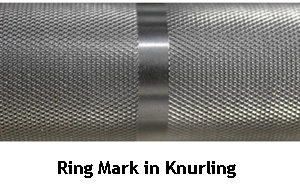
Every bar has a 1/4″ wide smooth mark in the knurling where you place your hands. IWF spaced markings are spaced for olympic weightlifting and are 910mm apart, while IPF markings for powerlifting are 810mm apart. Not a big deal for non-competitors, but it’s good to know where you’re placing your hands if you’re used to a certain spacing. A lot of bars nowadays have both sets of ring markings, making consistent hand placement that much easier.
My Recommendations
Rogue Ohio Power Bar
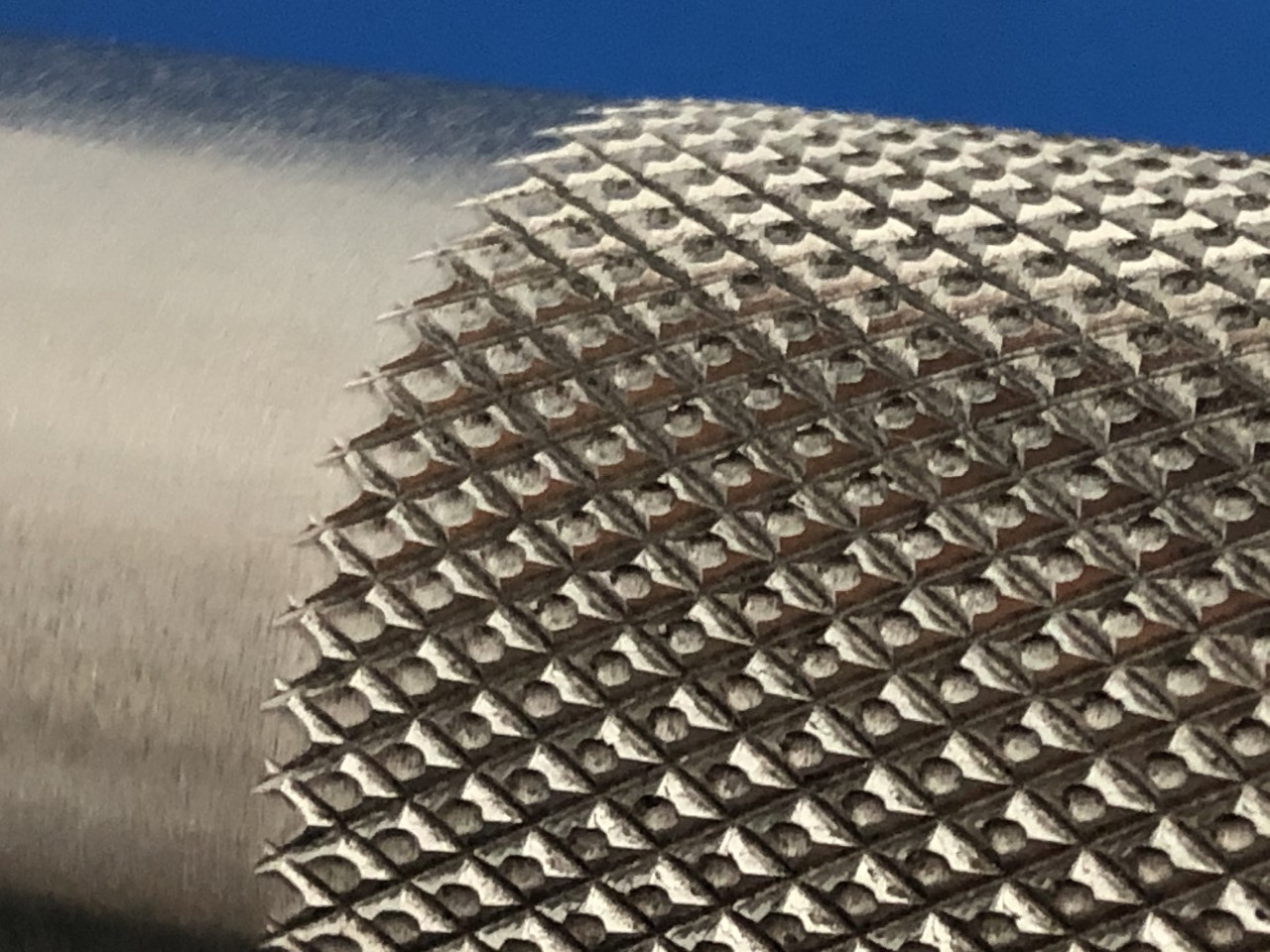
Since its release by Rogue Fitness in 2014, the Ohio Power Bar – shorthanded ‘OPB’ online – has been one of the most popular power bars. The reason for this is not just because of Rogue’s marketing. Lifters who have tried many bars eventually settle on this one, including myself.
The volcano pattern of knurl doesn’t feel as sharp as the mountain peak knurl on a lot of other bars. The volcano knurl has more peaks that stick to your hands. Rogue actually makes most of their bars with a volcano knurl, but this one is cut deeper for a more aggressive feel than the regular Ohio Bar, the Rogue Bar 2.0, or any of their others.
There are several versions of the OPB to choose from: Bare carbon steel, bare stainless steel, black zinc coated, and e-coat. Either of the two bare steel options will have the best texture, while the coatings smooth things out a tad, negating the benefit of such good knurl.
On the downside: It has grooved sleeves that cause noise while you slide plates on. Some lifters don’t mind this and like the way the grooves keep the plates from sliding.
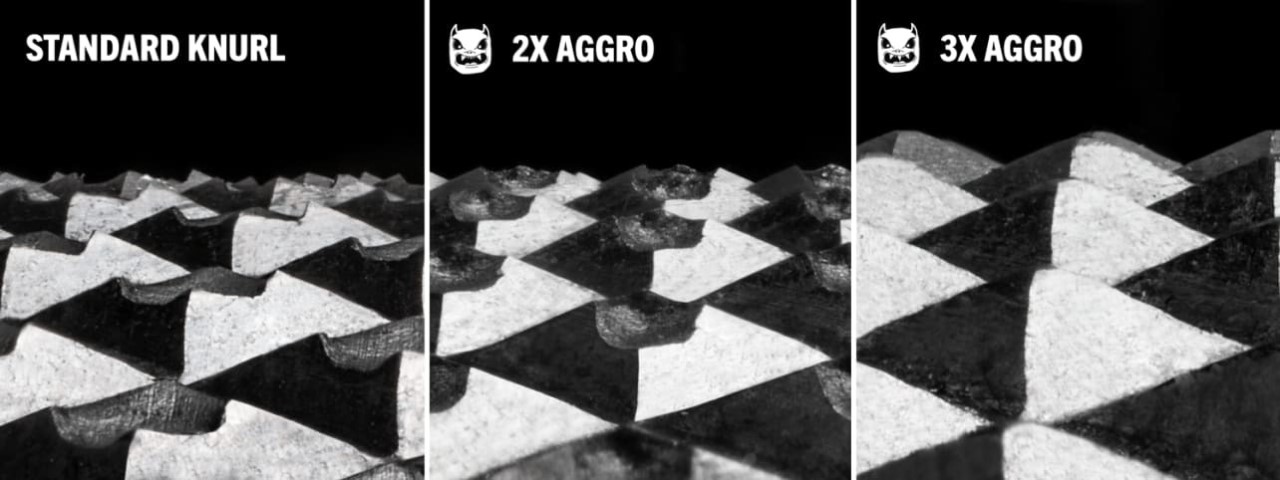
If you want an even more aggressive volcano knurl, see the 2X AGGRO version. It should help you out with your heavy deadlift grip and not tear up your hands as soon as mountain knurl will.
The 3X AGGRO ditches the volcano knurl entirely in favor of mountain knurl, and in that case you might as well consider one of the other mountain knurl bars here.
American Barbell Elite Power Bar
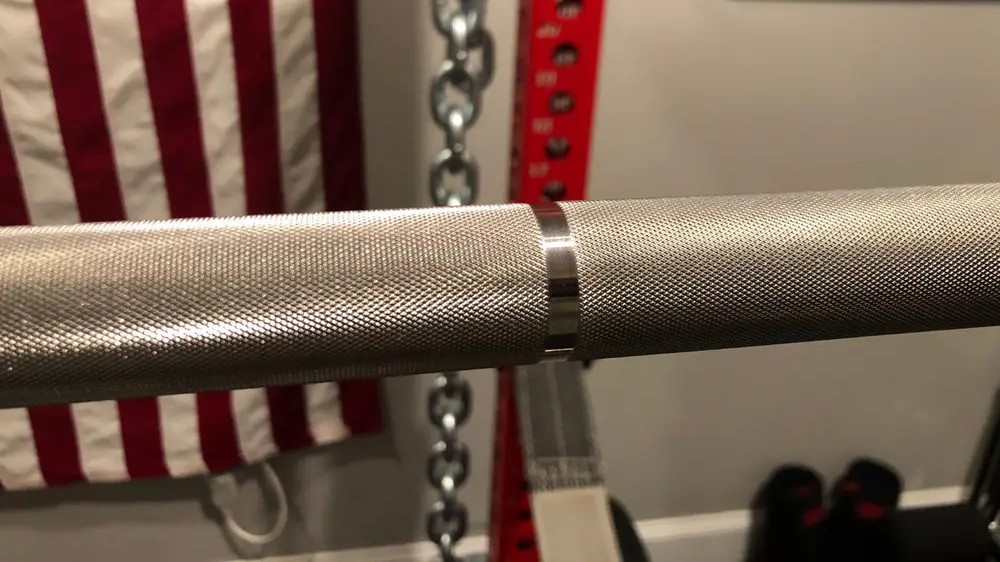
American Barbell has a unique knurling process that makes finer (closely-spaced) cuts, resulting in more peaks. This produces a feeling more like volcano knurl, even though it’s a mountain knurl. It doesn’t feel unnecessarily sharp.
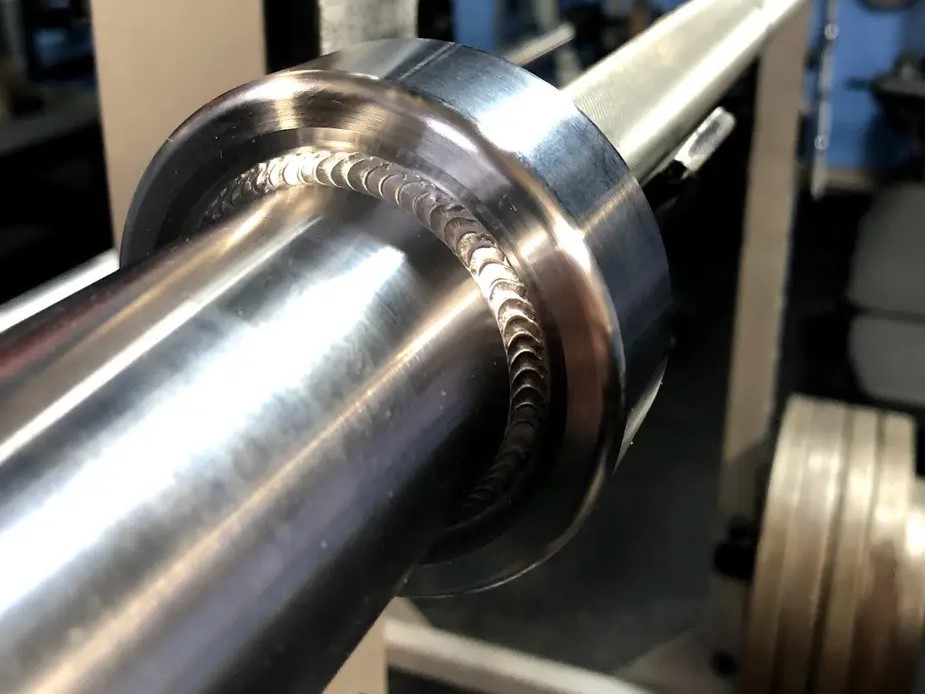
The quality of American Barbell is as consistently high as Rogue, also USA made, and I’ve found that the packaging is about as protective as Rogue, while other brands tend to have the bar sitting bare inside the shipping tube and often arriving having popped out. All American Barbell bars have a signature welded sleeve shoulder as shown above, instantly recognizable.
This one comes only in stainless steel. They have a couple others, the Mammoth Power Bar with a cerakote finish and the cheaper Grizzly Power Bar with a chrome finish.
The reason you might choose this bar over Rogue is the smooth sleeves, which are becoming hard to find on modern bars. No undue noise or friction sliding plates on.
On the downside: The Elite PB is $110 more than Rogue’s similar stainless steel OPB.
Texas Power Bar
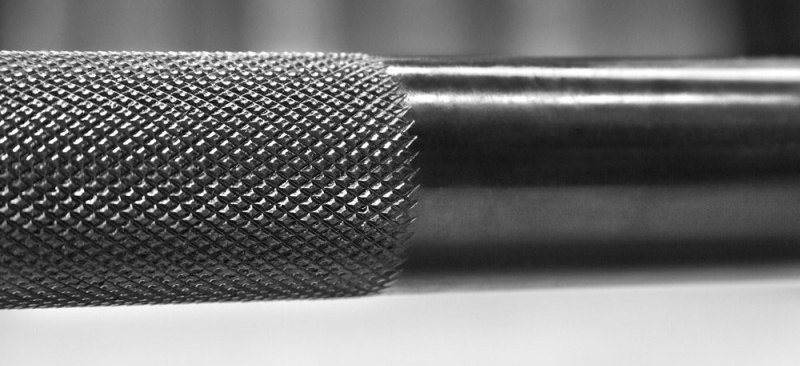
The Texas Power Bar or TPB, also USA-made like the two bars I featured above (not a coincidence – I’m trying to feature USA-made products) was one of the very first bars to have extremely aggressive knurl when it was introduced in 1980. It has remained a classic that is still used in competitions today.
On the downside: As mentioned in the video above, a thinner 28.5mm shaft and very large shoulders that make the plates stick out further, creating more whip.
Credit to Basement Brandon for pointing out these issues with the TPB:
Other
The other bars I listed in the chart at the top of this article are not bad choices! I listed them specifically because I thought they deserve to be shown, and there might be a reason you can find to buy them. As with all of these guides, my own preferences heavily color what I present as the “best”. I welcome your own views in the comments below!
That’s it for the deep-bite power bars! As another type of bar to consider, if you’re doing a lot of heavy deadlifting and you want to get the absolute best specialty bar for it, you might consider a specialty 7.5ft deadlifting bar that has more flex than a typical power bar and a smaller 27mm shaft for an even better pulling grip.

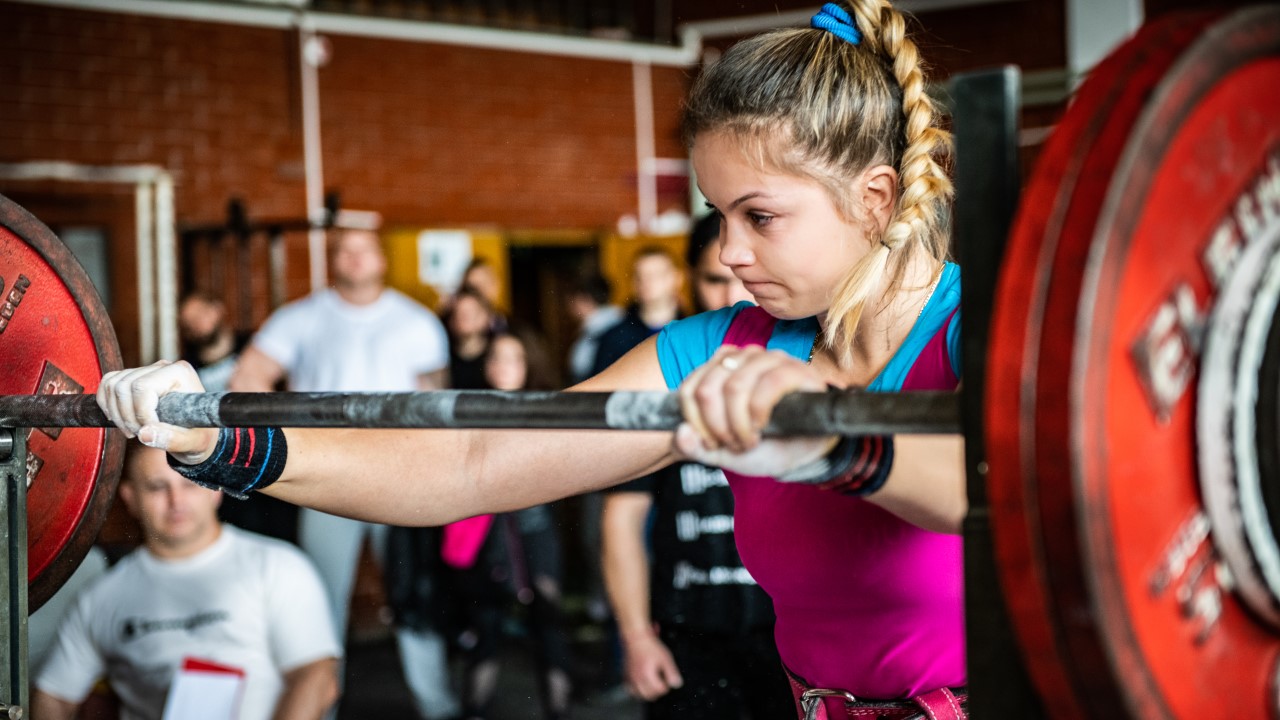
I got a an American Barbell Elite bar at the start of the pandemic. The knurling has a very sticky feeling in my hands. Previously using a York chrome bar which required chalk much earlier in warm up sets.
I like the grip on the bar so much I also bought their SS gym bar as well as their Comp Spec weightlifting bar.
That’s one way to do it, just get all the best ones! You can’t go wrong with that combo.
I’d throw the American Barbell stainless steel PL bar in the fray as well. I’ve been using it for about 2 years +, and it has held up extremely well. The knurling is very aggressive (also has center knurling) but this is key for heavy dead’s. The only drawback is the price, which was around 600. However, I’ve been using it for any and every exercise. The maintenance has been absolutely minimal – using a nylon brush after sets with chalk is all that has been necessary. It looks like they now make it SS with a cerakote finish. I highly recommend.
SS with cerakote, that’s a new one by me. Cerakote is good, but I wonder why they would go to the expense of SS and then cover it up to where it doesn’t even matter that it’s SS. Maybe I’m overestimating the effectiveness of cerakote in extreme conditions?
I’ve got pretty heavily calloused hands from years of lifting, but some of the knurling I have encountered feels like I’m picking up handfuls of broken glass.
Do you know if it was one of these bars?
It was not.